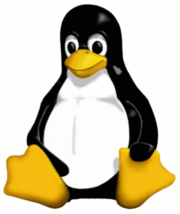Linux is a Unix-based open source operating system that is free to install and use and has many features.
Linux comes in a large variety of “distros” (distributions) such as:
- Ubuntu: Popular, easy to use and available as a single CD install. www.ubuntu.com
- Kubuntu: KDE version of Ubuntu
- Fedora: Feature rich but large. Available as a multiple CD or DVD install. Associated with but not supported by Redhat. fedoraproject.org
- Suse: Feature rich but large, supported by Novell. Often used by businesses. www.opensuse.org
- Redhat: Commercial distro often used by businesses. Not available free.
Linux tips
- Dual booting: If you want to setup dual boot with Windows, install Windows first, then install Linux. Most distros include a bootloader such as Grub which will allow you to dual boot.
- Remote desktop access:
- You can access a Linux computer using TightVNC (which is installed as standard with Fedora and Ubuntu).
- Enable remote desktop on Linux. In Ubuntu go to System -> Preferences -> Remote Desktop
- Install a TightVNC client on your Windows computer then use this to connect to the Linux computer using its IP address or system name.
- More details: Remote Access to the Ubuntu Linux Desktop
- Getting CDs or DVDs: These are often available free with computer magazines, or you can download CD images from the Intenet then burn them onto CDs. Some distros (such as Ubuntu) will mail you a CD if you place an order over the Internet.
- Accessing Linux network share from a Windows computer.
- You must first specify the share in Linux.
- Then you must add a Samba user profile the same as the one you use on the Windows PC using this command from a terminal (command line, access by Applications -> Accessories -> Terminal):
sudo smbpasswd -a username
It should be noted that the user added as username has to exist as a Linux user as well.
More details: SettingUpSamba – Community Ubuntu Documentation
Linux is optimised for low power computing
Linus Torvalds, the creator of Linux, has stated that Linux is able to boast genuine green credentials, after years of hard work. He and fellow programmers modified almost every part of the operating system’s core to improve power management. They also enhanced the ability to track down the most power-hungry parts of a hardware and software system. “Everybody wants to be power-aware,” he said.
“It’s not just that you want to be green – it’s eating up your batteries.”[1]
See also
External links
- SwitchingToUbuntu/FromWindows – Community Ubuntu Documentation
- Linux, Wikipedia
- Linux Wiki
- Linux Questions Wiki
- Wikihow:How to choose a Linux distro
- LessWatts is about creating a community around saving power on Linux, bringing developers, users, and sysadmins together to share software, optimizations, and tips and tricks.
References
- Torvalds pans Apple with ‘utter crap’ putdown, Technology, smh.com.au
![]()

